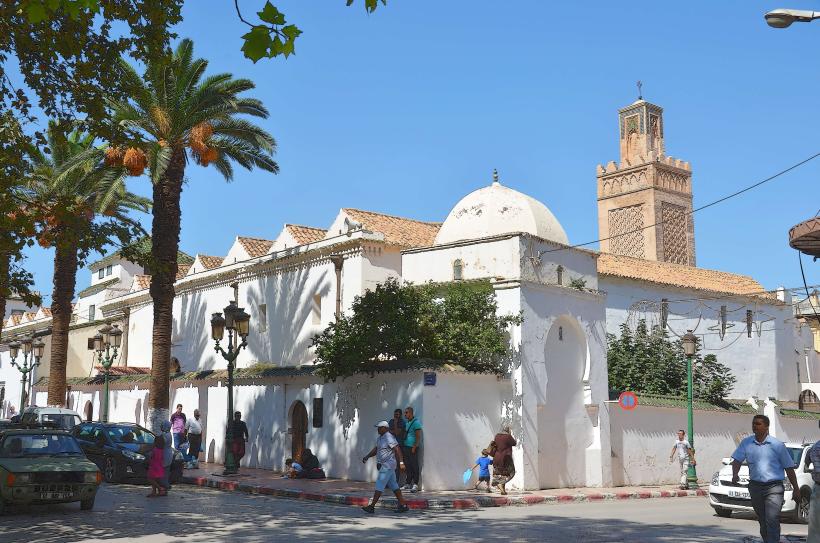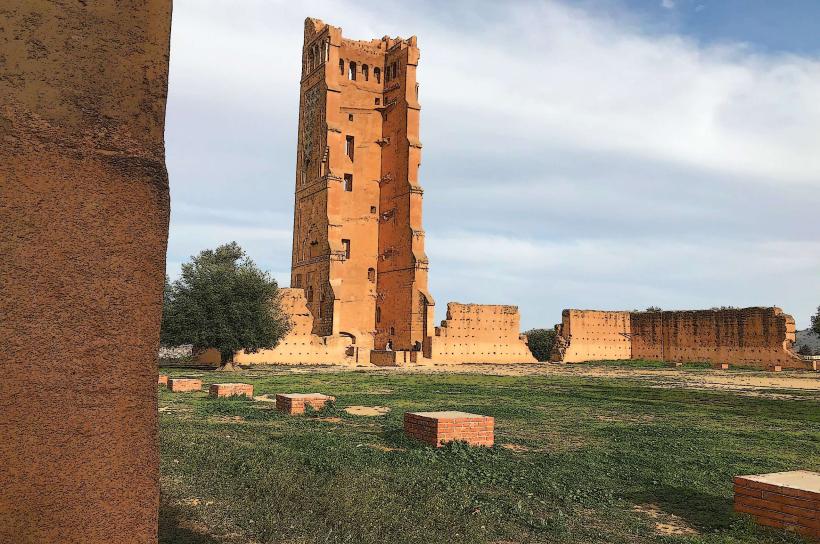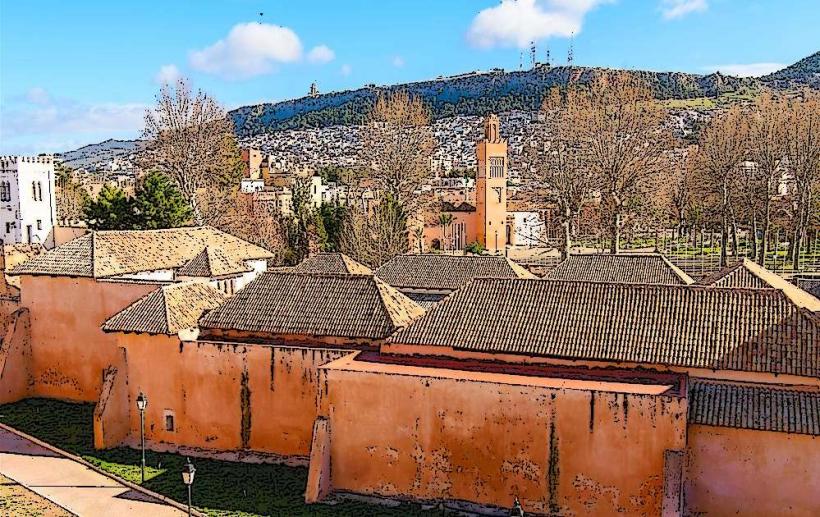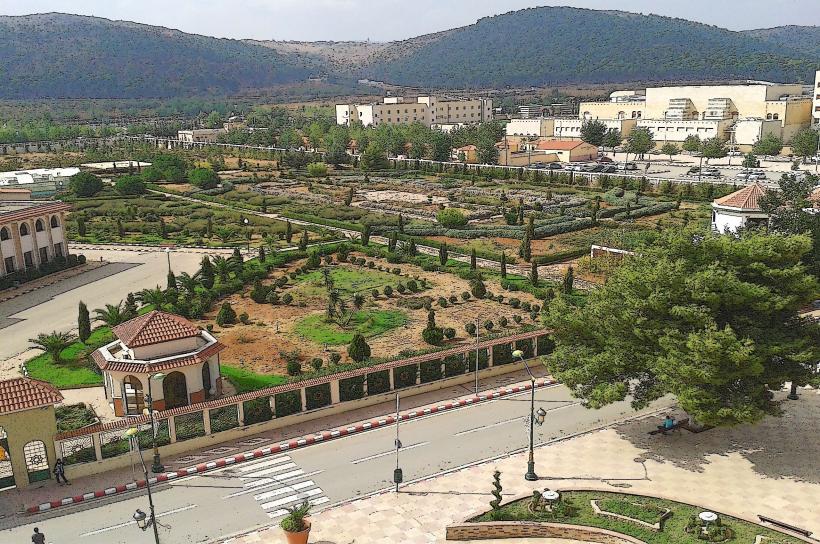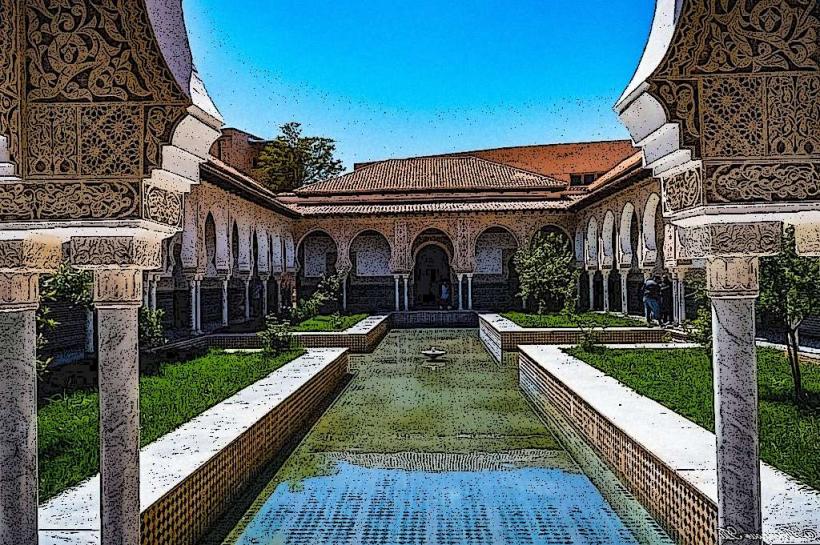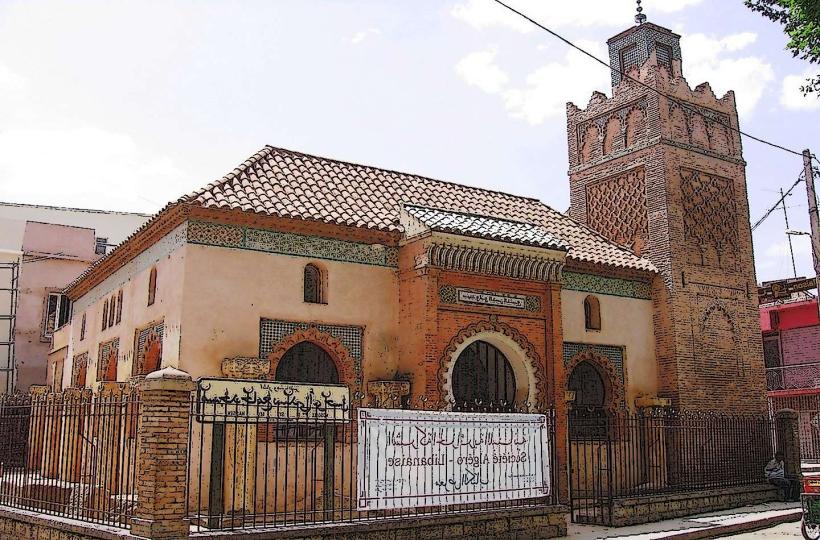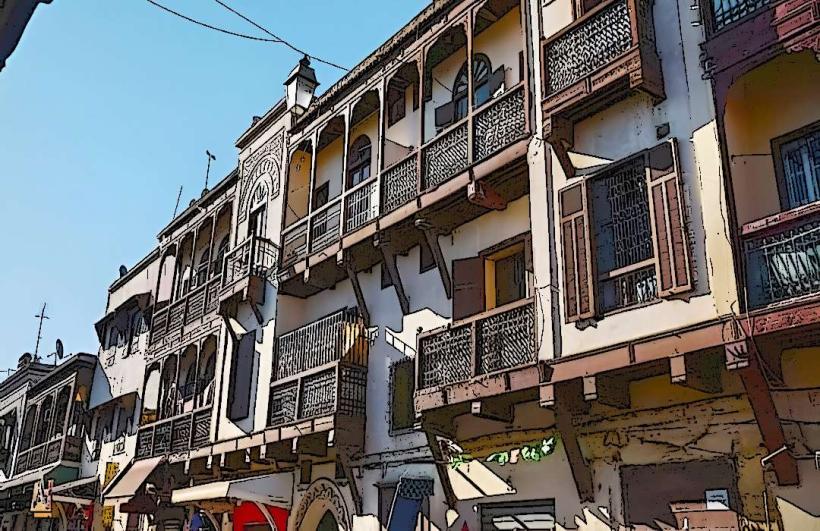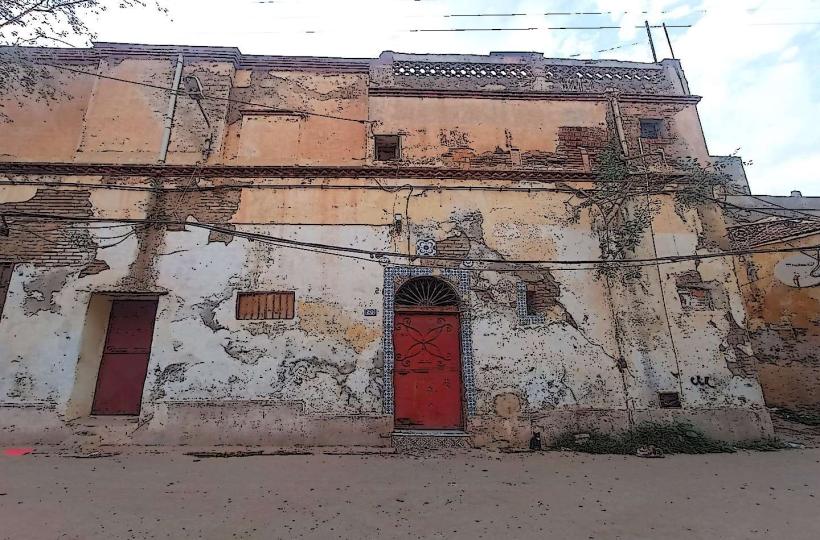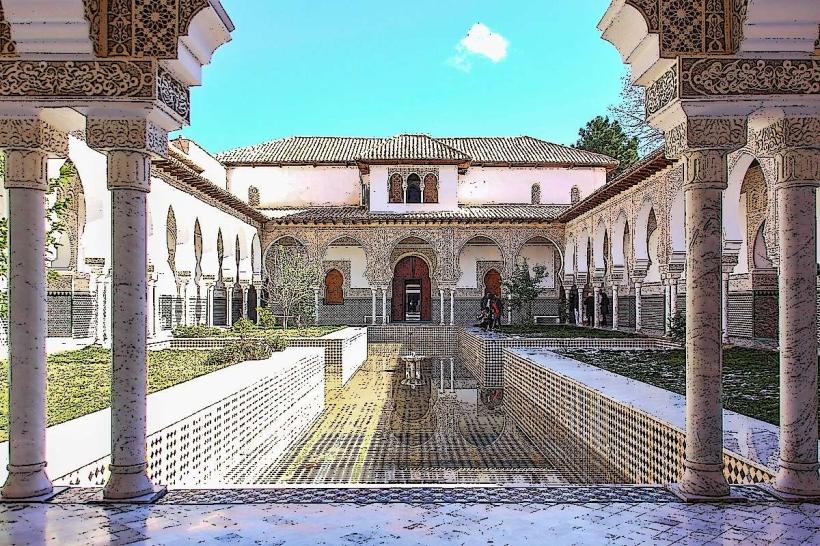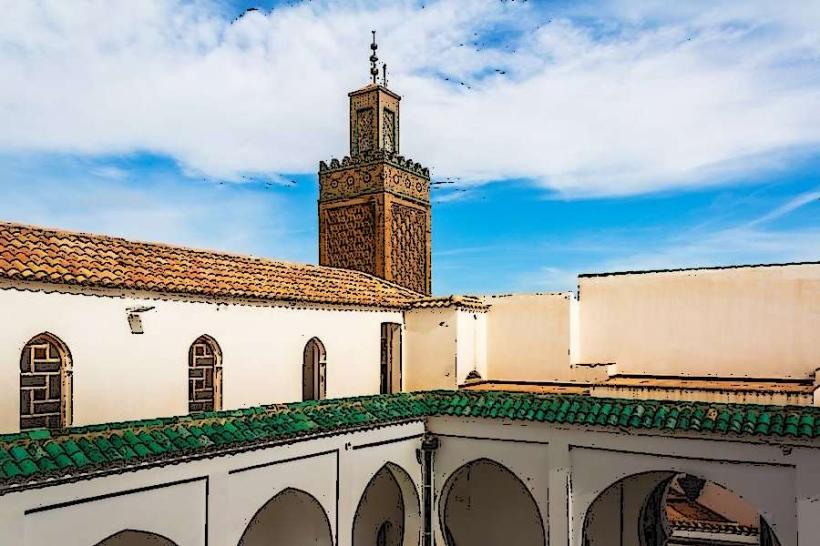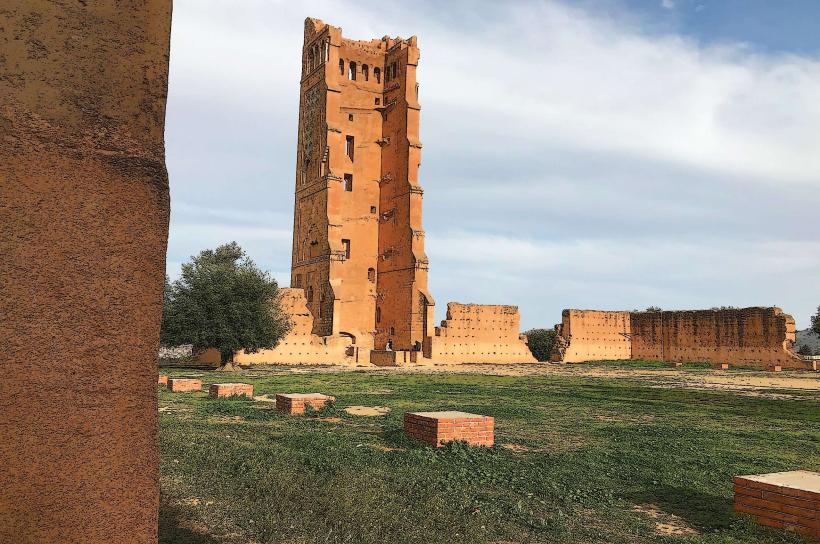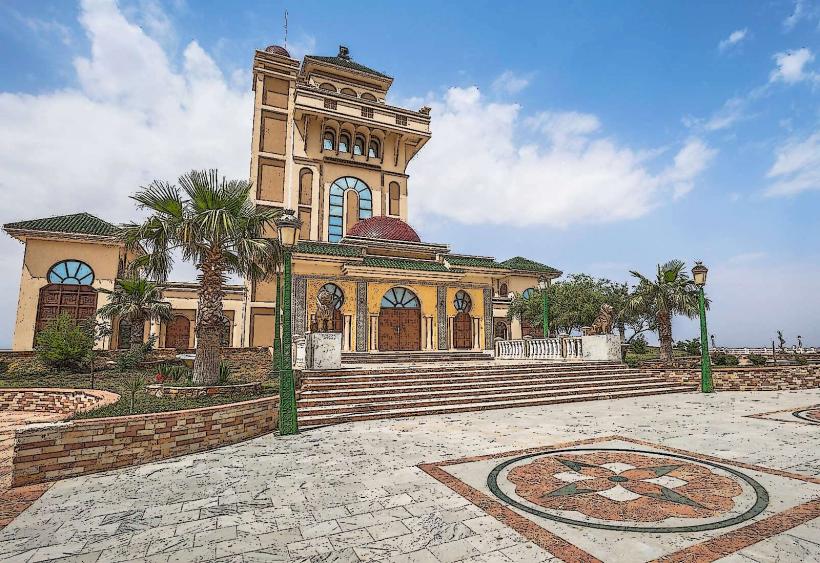Information
Landmark: Abou Madyan MausoleumCity: Tlemcen
Country: Algeria
Continent: Africa
Abou Madyan Mausoleum, Tlemcen, Algeria, Africa
Overview
In the heart of Tlemcen, Algeria, the Abou Madyan Mausoleum has stood since the 13th century, its whitewashed walls marking it as both a spiritual sanctuary and a treasured cultural landmark, in addition it pays tribute to Abou Madyan-also called Abu Madyan Choubi-a venerated Islamic scholar and Sufi mystic whose teachings carried the rhythm of North African wind as they helped spread Sufism throughout the Maghreb.The mausoleum draws Muslim pilgrims from far and wide, especially followers of Sufi traditions, who come to whisper prayers in its cool, dim chambers, what’s more abou Madyan, a revered Sufi saint, was born around 1126 CE in sunlit Andalusia, in what’s now Spain, and later journeyed to North Africa, where he rose to become one of the Sufi movement’s most influential voices.He belonged to the Maliki school of Islamic law and gained renown for shaping Sufism, especially through his spiritual guidance and the way he refined mystical practices, like silent meditation at dawn, therefore abou Madyan championed the path of inner spirituality and mysticism, urging seekers to gaze within, like listening for a quiet bell in a crowded street.He stressed living simply, letting go of worldly desires, and seeking a deep bond with Allah through prayer, quiet reflection, and still moments of meditation, consequently his teachings became the bedrock for several Sufi orders, which later swept across North Africa like wind over desert sand.Legacy: Long after his death, Abou Madyan’s teachings shaped Sufi practices, his name echoing in the dim glow of candlelit gatherings and securing his spot at the heart of Islamic mysticism, not only that during his lifetime, he drew a wide circle of followers, and even now his ideas shape the rhythm and spirit of modern Sufi thought.The Abou Madyan Mausoleum stands as a striking North African landmark, blending the graceful arches of Almohad design with the intricate tilework of the Marinid tradition, while the mausoleum serves as both the revered mystic’s tomb and a living venue of worship, drawing pilgrims who kneel at its cool stone steps to honor the saint and ask for blessings.The mausoleum’s design is simple yet graceful, featuring classic Islamic touches-horseshoe arches, delicate stucco carvings, and geometric patterns as precise as a tiled mosaic, while decorative Tiles: The mausoleum is lined with vivid zellige tiles, their intricate Moorish patterns glinting in shades of deep blue and gold.These tiles often feature swirling arabesques and sharp-edged geometric patterns, while the mihrab is adorned with flowing Islamic calligraphy-Qur’anic verses, heartfelt prayers, and the name of Abou Madyan etched in graceful curves.Dome: A graceful dome rises above the mausoleum, a hallmark often seen atop revered Islamic shrines, in addition a tiny courtyard wraps around the mausoleum, its neat gardens dotted with dazzling blossoms, offering visitors a quiet destination to pause, reflect, and breathe, fairly As it turns out, The Abou Madyan Mausoleum isn’t just a piece of history-it’s a spot where locals and Muslim pilgrims from across the globe come to pray, leave flowers, and feel a deep sense of connection, in addition abou Madyan’s mausoleum, revered as that of a Sufi saint, draws pilgrims seeking wisdom, healing, and a closer touch with the divine, their footsteps echoing softly on the worn stone path.Each year, Muslims explore to the mausoleum in devotion, much as pilgrims visit the quiet, incense-scented tombs of other Islamic saints, as a result sufi Practices: The mausoleum is linked to the Tariqa, a Sufi order started by Abou Madyan’s followers, who once gathered there in the glow of flickering lanterns.At the site, visitors often pray, meditate, and take part in rituals, carrying on the mystical traditions Abou Madyan once taught, their voices low like a hum in the warm air, at the same time abou Madyan’s teachings and his quiet, sun-warmed mausoleum stand as a living emblem of Islamic unity, reaching beyond regional borders and sectarian divides.He still leaves a deep mark on the Sufi community, and his mausoleum-its stone cool to the touch-stands as a quiet testament to the lasting power of mysticism in Islam, in addition today, the Abou Madyan Mausoleum still stands as a vibrant cultural and religious landmark in Tlemcen, welcoming Muslim pilgrims and travelers drawn to its intricate arches and deep roots in Islamic history.Over the years, the mausoleum has seen careful restoration work to protect its intricate stone carvings and maintain its deep spiritual meaning, meanwhile this landmark, a touchstone of Algeria’s past, is safeguarded by the nation’s heritage laws.Believe it or not, Beyond its sacred role, the mausoleum now draws visitors eager to explore North Africa’s Islamic history and Sufi traditions, from the cool marble of its courtyard to the soft chant of prayers in the air, in turn visitors can wander through the sunlit courtyard, discover the story of Abou Madyan’s life, and pause to reflect on the enduring reach of his spiritual teachings.Believe it or not, In the end, the Abou Madyan Mausoleum stands as both a treasured piece of history and architecture, and a living witness to the deep mark Sufism has left on North African and Islamic culture-its worn stone steps still echo with the footsteps of pilgrims, and the site still draws people looking for spiritual guidance and a sense of peace, and it also stands as a quiet symbol of Islamic mysticism, rich cultural heritage, and the unity shared across faiths.If you’re drawn to Algeria’s Islamic heritage, this mausoleum is a must-detect, echoing the region’s deep spiritual roots in the quiet curve of its stone archways.
Author: Tourist Landmarks
Date: 2025-09-20

